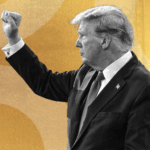Agora Raises $50 Million to Expand Stablecoin Offerings
Agora, a stablecoin issuer, secured a $50 million Series A funding round led by cryptocurrency venture firm Paradigm.
The investment aims to accelerate the expansion of Agora’s white-label stablecoin offering, branded AUSD. This comes as demand for dollar-backed digital assets continues to grow.
“What we wanted to do is really something novel, which is start by building the network,” said Nick van Eck, Agora co-founder. “We always had the view that we were going to do white-labeled issuance in a different way to how existing peers had done it.”
White-Label Stablecoins via Shared Infrastructure
Agora enables companies to launch their own branded stablecoins using AUSD’s foundational technology. Users benefit from shared liquidity pools and network interoperability.
The project was established by Nick van Eck, the son of VanEck CEO Jan van Eck, alongside crypto industry veterans Drake Evans and Joe McGrady.
Agora has already completed collaborations with blockchain platforms like Polygon to launch tailored stablecoin solutions, with intentions to broaden its partnership scope beyond blockchain-centric entities.
Funding and Investment Partners
The Series A funding was spearheaded by Paradigm, a firm co-founded by former Coinbase employee Fred Ehrsam. Dragonfly Capital also participated, exercising its rights to increase its stake in AUSD.
Crowded Market
Agora enters a competitive arena dominated by major players Circle and Tether, with market capitalizations reaching $62 billion and $158 billion, respectively. Agora’s own market cap currently stands below $130 million.
[Image: Market cap comparison of the top three stablecoins in the crypto space]
Prominent stablecoins by market cap according to CoinMarketCap data.
Furthermore, non-cryptocurrency giants like Meta, Apple, and Twitter (now known as X) have expressed interest in stablecoin development. Even entities with strong political connections, like World Liberty Financial (co-founded by Donald Trump), have launched USD-pegged stablecoins, exemplifying the growing industry significance.
A significant factor driving Agora’s expansion focus on international markets stems from regulatory ambiguity surrounding stablecoins in the United States. While van Eck’s firm is preparing to obtain necessary regulatory licenses, including money transmitter permits, its immediate target is overseas markets where demand is more palpable due to currency fluctuations and inadequate cross-border payment systems.
“A lot of different financial institutions outside of the US, I would say, are looking more aggressively and will be quicker to move than some of the companies in the US,” van Eck observed.
Cointelegraph attempted to reach Agora for a comment for this piece but had not received a response by the publication date.
First Real-World OTC Trade
This year, asset manager Galaxy executed Agora’s AUSD stablecoin in its first significant over-the-counter trade, underscoring the transition from concept to practical financial application.
The original iteration of Agora materialized after raising an initial $12 million seed funding last April. Investors in that round included Dragonfly, alongside Robot Ventures, Wintermute, Breed, and General Catalyst – the latter institution being a former employer of Nick van Eck.
Distinguishing Agora from principal competitors such as USDC and USDT is its revenue-sharing model. A substantial portion of the yield derived from reserve assets is distributed back to partner institutions.
“One of the things we believed in the very beginning was that stablecoins should be run like public goods, which to us meant the lion’s share of the revenue gets passed to the people who are providing value,” explained Drake Evans, a co-founder.












